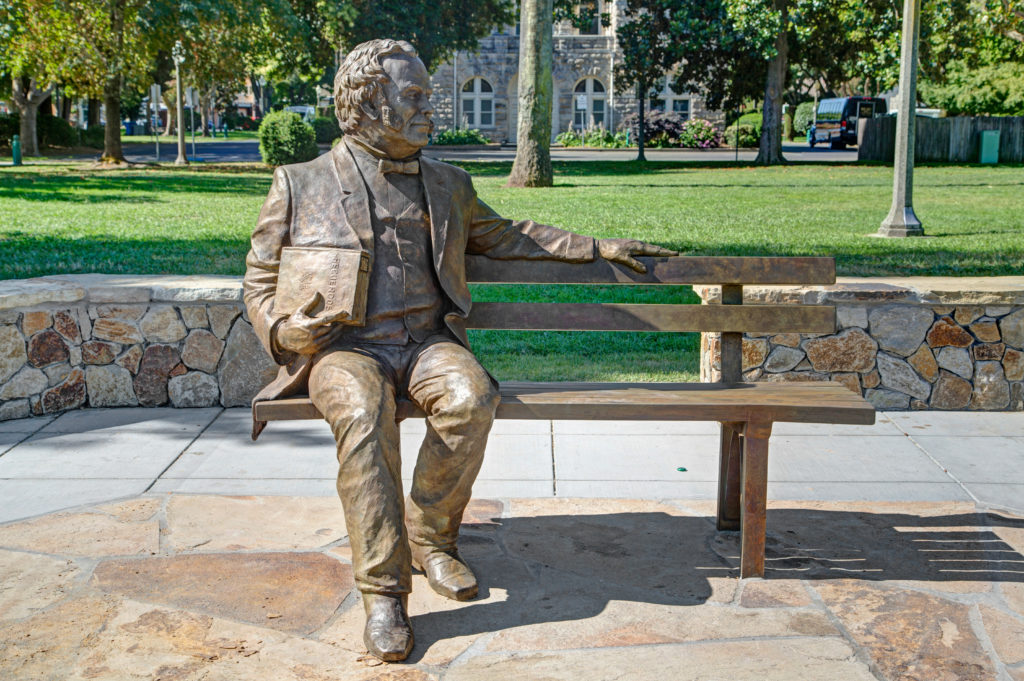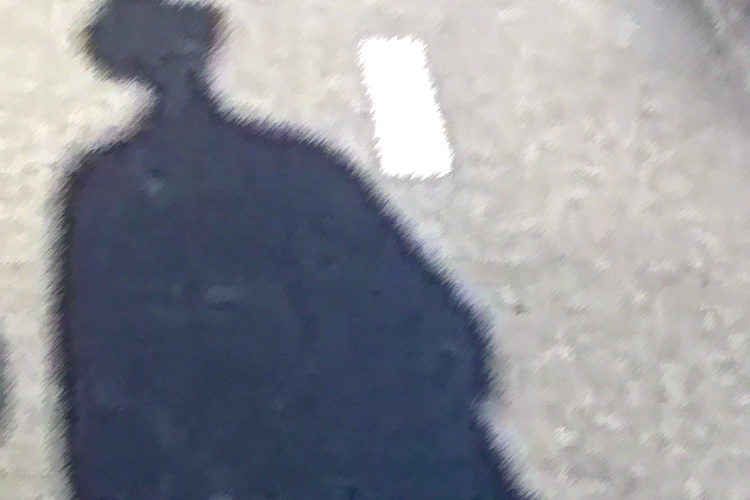The occasional journeys of Shadowman
Catch and release
Beautiful wild phrases
hiding in the quotidian,
lost in the cacophony of reason,
become entangled in blue lines on yellow pads
before they are bound, publicly paraded like prisoners,
and eventually released in breathy cages
of earnest poetic inflection.
Regarding Vallejo Monument

It is a question frequently asked of me lately, “What do you think about removing the Vallejo statue?”
I deplore the behavior of the police in the killings of George Floyd and so many others, and recognize the historic context of unjustified police actions and responses, and I support the Black Lives Matter movement, because, of course, they do! Black lives matter! But I have also saved some outrage for the historic malevolent treatment of Native American people. I have heard the punditocracy decrying slavery as America’s “original sin”. And it is sinful. But it could be that the genocide of Native Americans was the true American Original Sin, beginning a pattern of devastation which continues to this day.
I believe that those suggesting the removal of the Vallejo Monument are raising objections about his role in subjugating the native populations. But at the California Constitutional Convention in 1849, where he was a delegate helping to write the Constitution, he proposed voting rights for Native Americans, prohibiting slavery in California, and giving women the right to own their own property. These are not the kinds of proposals one would expect from a ruthless exploiter.
If removing the monument would mean the end of systemic, institutionalized racism and all of its deleterious effects, I would fetch my tools and make very quick work of it. Wouldn’t it be nice if such a simple act could swiftly wash away the taint of bigotry and ignorance?
But I don’t see the Vallejo monument as a symbol of oppression. It does not glorify racial inequity or elevate a myth of racial superiority. It’s not about domination, it’s about dialog. I can’t imagine that its removal would bend the moral arc of the universe toward greater justice.
The monuments erected by the United Daughters of the Confederacy, however, are symbols of oppression and intimidation and were always intended as such. Public Art has power and in the case of the Confederate monuments that power has been abused. Removing them as aspirational symbols for baby bigots is at least a small gesture toward creating a more just future.
I think we still need public art, even monuments. We need to encourage our better selves, to aspire, to imagine a different, better world and then take action.
Travels in Argentina
Nighttime Taxi Ride
Tango at Bar Sur
Buenos Aires
Wheeler Peak
Imagine sitting on a mountainside in the shade of a windblown tree. There are other trees around you but almost nothing uphill except bare rock. Well OK, there is some moss and some lichen on the rocks, but there are no trees or bushes. Then imagine that this tree has always been here. When the Pony Express passed this way, when whatsisname surrendered at Yorktown, when Columbus landed, when Leif and his bunch found their way to Greenland and landed, this tree was here. You know the big redwood slabs that have pins in the growth rings that indicate significant historical events? Like when Jesus was a baby? Well, when the tiny seed that became that magnificent redwood tree fell from its cone, the tree under which you are sitting was an OLD tree. When the pyramids in Egypt were built, this tree, this exact tree, was right here. There is an amazing parallax of history here in the shade of this tree. And yes, the ravens still hurl insults at eagles and the jays still squabble and the big black ants still march relentlessly up and down the amazing living being that is this tree, just as they always have. But sitting here, alone on a mountainside, with the wind rushing and tumbling through the long light of an autumn afternoon, time seems to have a huge wrinkle. The perceived importance of our human endeavors shrinks and the grace of the wild expands and fills the world.
Washing Dishes
Alley Poetry
Steve Trenam leads a poetry class in which the poets use visits to various environments to inspire or motivate poetic impulses. On January 3, 2020 the class visited the LaHaye Art Center and toured the artists’ studios and Alley Gallery. The participants then had 30 to 45 minutes to put pen to paper. I asked them to share their work with me.
